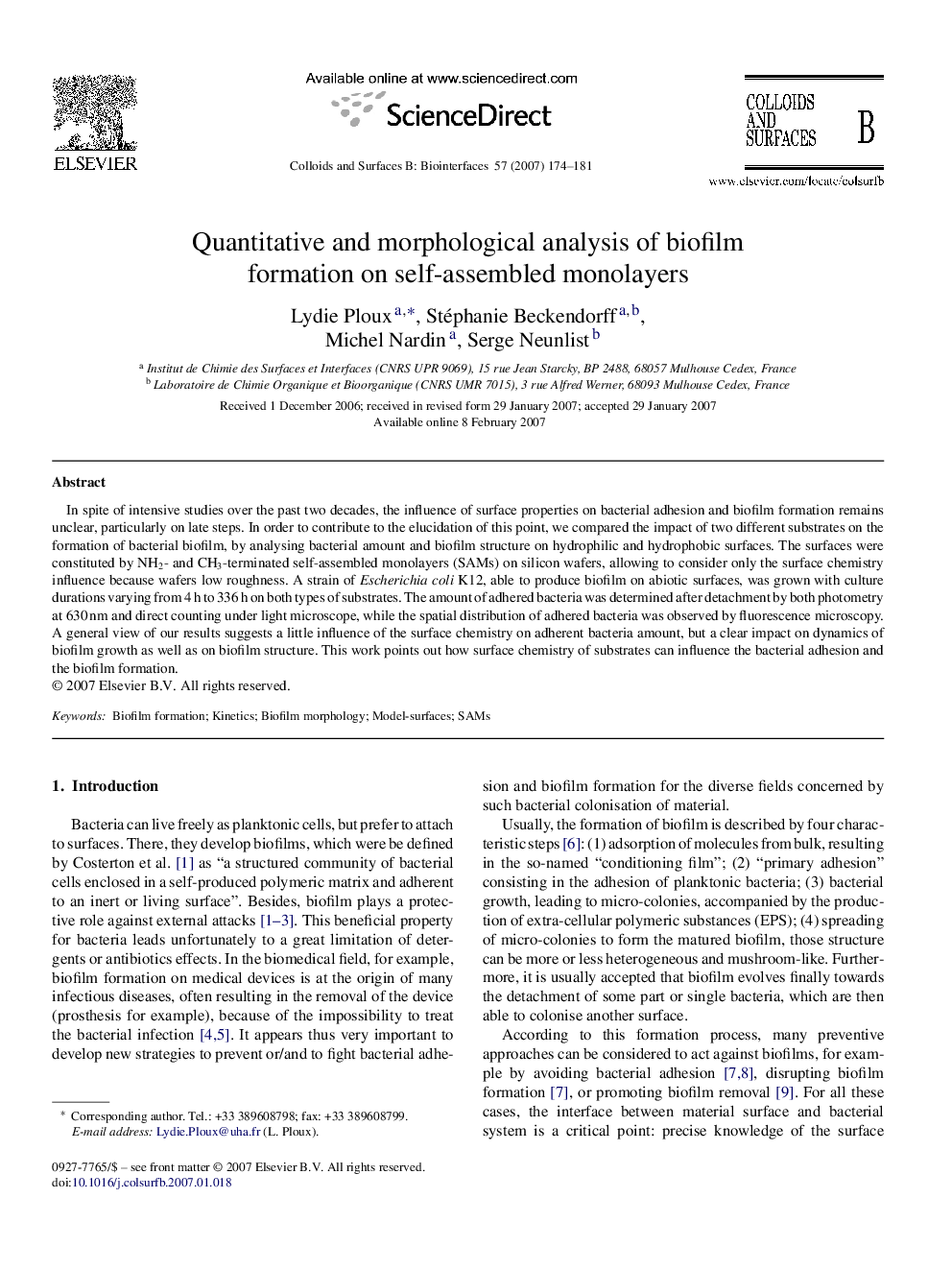| Article ID | Journal | Published Year | Pages | File Type |
|---|---|---|---|---|
| 602730 | Colloids and Surfaces B: Biointerfaces | 2007 | 8 Pages |
Abstract
In spite of intensive studies over the past two decades, the influence of surface properties on bacterial adhesion and biofilm formation remains unclear, particularly on late steps. In order to contribute to the elucidation of this point, we compared the impact of two different substrates on the formation of bacterial biofilm, by analysing bacterial amount and biofilm structure on hydrophilic and hydrophobic surfaces. The surfaces were constituted by NH2- and CH3-terminated self-assembled monolayers (SAMs) on silicon wafers, allowing to consider only the surface chemistry influence because wafers low roughness. A strain of Escherichia coli K12, able to produce biofilm on abiotic surfaces, was grown with culture durations varying from 4Â h to 336Â h on both types of substrates. The amount of adhered bacteria was determined after detachment by both photometry at 630Â nm and direct counting under light microscope, while the spatial distribution of adhered bacteria was observed by fluorescence microscopy. A general view of our results suggests a little influence of the surface chemistry on adherent bacteria amount, but a clear impact on dynamics of biofilm growth as well as on biofilm structure. This work points out how surface chemistry of substrates can influence the bacterial adhesion and the biofilm formation.
Related Topics
Physical Sciences and Engineering
Chemical Engineering
Colloid and Surface Chemistry
Authors
Lydie Ploux, Stéphanie Beckendorff, Michel Nardin, Serge Neunlist,
